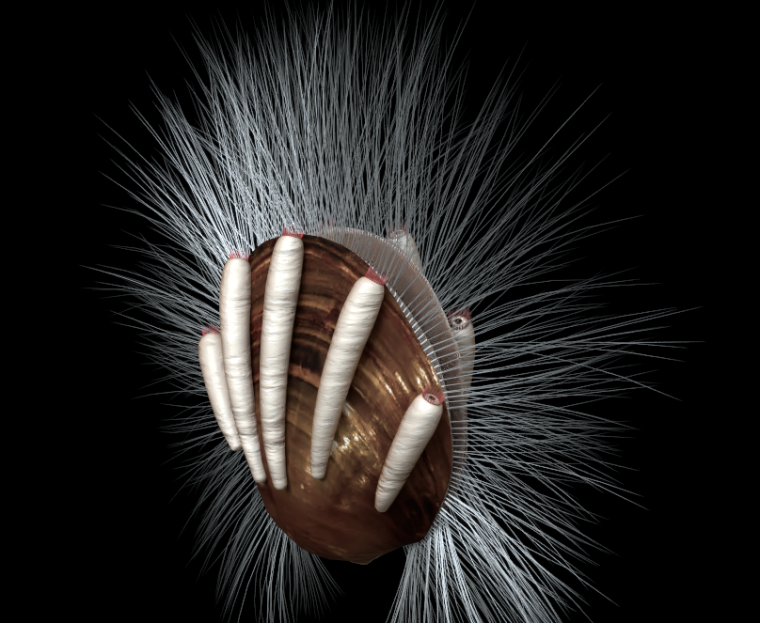
Enlarge / Artist's depiction of what this brachiopod—and its parasites—would have looked like. (credit: Zhifei Zhang (Northwest University))
From the perspective of a legacy-seeking critter deep in Earth’s history, there's little chance of you hitting the big time. The odds of getting fossilized are low enough. You need to die in the right kind of place, get buried before you are picked apart or decay, and encounter the right kind of chemistry underground that replaces your fleshy bits with enduring stone.
This unlikely chain makes capturing common life events like your last meal or developing embryos even more rare. But in the case of a newly published study, researchers were lucky enough to find what appear to be the earliest known parasites, still stuck to the hosts they targeted some 510 million years ago.
The find comes from Yunnan, China, where a sedimentary rock layer called the Wulongqing Formation is chock full of tiny fossil brachiopods of a species named (quite sensibly) Neobolus wulongqingensis. Back in the Cambrian Period, shortly after multicellular animal life bloomed into incredible variety, these creatures were living on the seafloor. A team led by Zhifei Zhang at China’s Northwest University discovered that N. wulongqingensis was not alone in the rock—many were adorned with whitish tubes on the exteriors of their shells.
No comments:
Post a Comment